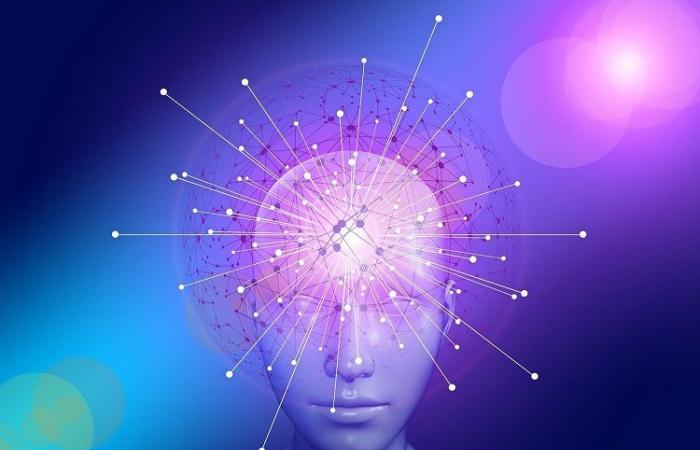Ampere Analysis analyzed to what extent and how artificial intelligence has now crept into the entire industrial value chain, what tools are available and the implications for “human” professionals
“I think within five years it will be possible to make an entire film – from script to production to visual effects – from a bedroom.” With these words Guy Bisson, Executive Director di Ampere Analysisconcluded the webinar AI in the TV and movie creation and value chainan in-depth analysis of the role of artificial intelligence (AI) in the audiovisual industry. “When I started working on this project, about six months ago, I was quite skeptical about the impact of AI,” he said. Bisson’s skepticism has a lot to do with the technological history of the audiovisual industry, where we have seen announcements of innovations defined as “revolutionary” that, instead, have turned out to be, substantially, just “talk”. What made Bisson and the researchers at Ampere Analysis change their minds about the role of AI is what was reconstructed in the webinar, that is, how This technology has now insinuated itself into all phases of the production process of the audiovisual industry.
(FICTION) SCIENCE VS REALITY
«It is important to remember that There are several types of artificial intelligence“, Bisson recalls. If the “real” AI – that is, a machine “genuinely” equipped with intelligence (like SkyNet of Terminator) – for the moment it is still a long way off, to date the industry exploits two types of AI, generative, capable of generating new content based on existing data (the well-known ChatGPT) and discriminative, which applies new data to existing patterns verifying its application. An example is Script Analysis which evaluates whether or not a script is suitable for a specific audience. «AI language is an interconnected set of technologies and concepts», recalls Bisson, and it is precisely this ability to connect that ensures that it can act at every stage of the value chain.
CREATING WITH AI
Artificial intelligence tools can already be exploited in first stages of the creative process of a cinematographic or television product, from the conception of the idea to the pitch, up to the writing of the screenplay and its development. Examples of what the market already makes available are Google Gemini, Largo and Scriptbook. AI also intervenes in the review phase, as does AI Canto, a tool still in development that allows you to analyze and refine ideas. The peculiarity is that the review is done from different points of view, i.e. by creating digital personas capable of analyzing the text from particular perspectives, such as a particularly critical manager, a gaming expert or an executive particularly interested in the GenZ perspective. We therefore arrive at the development and financing phase and, also in this case, there are many tools available, capable of intervening and supporting the organizational phase, the creation of contracts and pre-production.
PRODUCTION AND DISTRIBUTION
Let’s get to the phase production and post-productionand, areas in which the use of artificial intelligence is better known, if only because its uses can be concretely seen here. «The production is essentially a construct of video and sound», say the researchers. AI, in fact, intervenes to capture and generate forms of audio and video. Perhaps the best-known platform is Sora, the OpenAI (ChatGPT) video generation tool, capable of generating an entire HD video starting from a textual input, with notable implications for editing and special effects. We therefore arrive at the distribution phase and all those aspects relating to the management and sale of the audiovisual product and its localisation. The algorithms fall into this phase content reccomandation e discovery, usually tools owned by individual operators. But it is also the phase in which AI shows its ability to optimize costs, for example allowing subtitles to be created quickly and economically for different countries. Then there is the whole world of post-production and product placementwhere systems such as Ryff intervene, which allows the digital insertion of products and brands within the existing filmed material, to the point of customizing them based on targets and other parameters.
THE MORAL QUESTION
Technology also intervenes in the legal and contractual phase, assisting professionals in drafting and reviewing contracts. However, there are many legal issues to consider and range from the role of copyright in AI training, the ownership of the IP and the contents generated, the validity and reliability of the same (i.e., who is legally responsible for the errors committed by the AI) , and possible biases and representativeness issues with which AI is trained and therefore “naturally” inserted into its processes, not to mention issues such as privacy and data protection. Despite the many tools and uses for the benefit of those who work, and despite the tech-enthusiasts, technology still has dark areas and it is not clear how to intervene. In fact, the Ampere Analysis report concludes like this: «The use of AI in the film and media industries – in areas ranging from content creation to recommendation algorithms and deepfake technology – has a number of legal implications. that filmmakers, producers and content creators should consider. The central concern is the issue of copyright and, fundamentally, what position human-produced, AI-assisted or fully AI-generated content occupies within the legal spectrum.” Will we need an algorithm to answer?
The full article was published on TV of June 2024, download the issue or subscribe here
© ALL RIGHTS RESERVED
In case of citation please cite and link tivubiz.it






